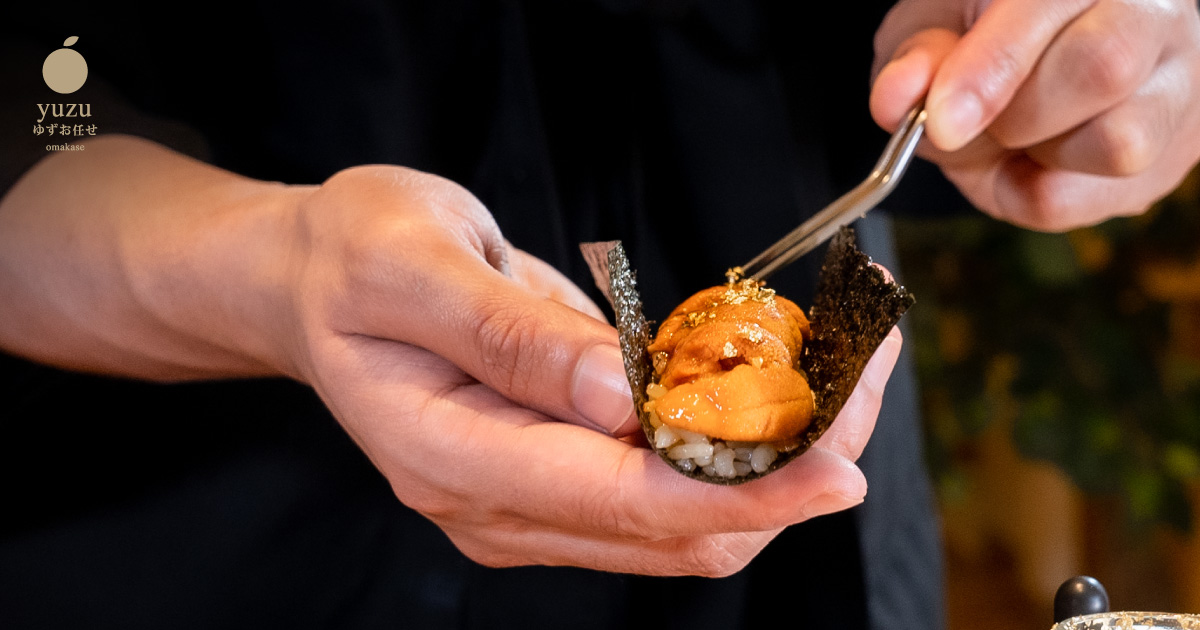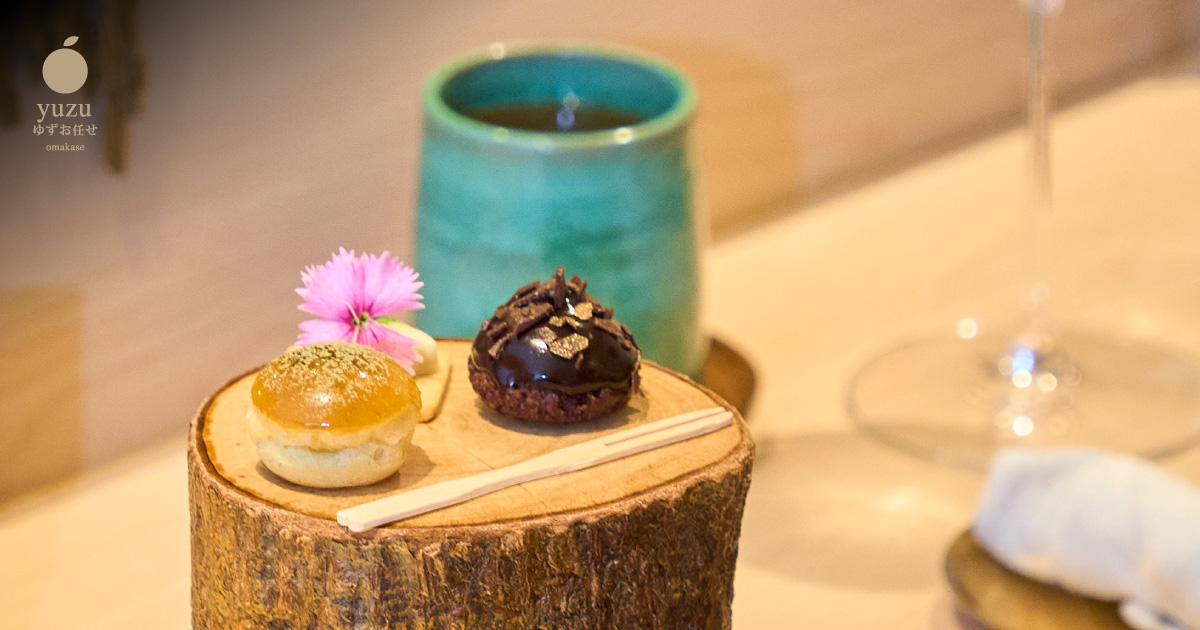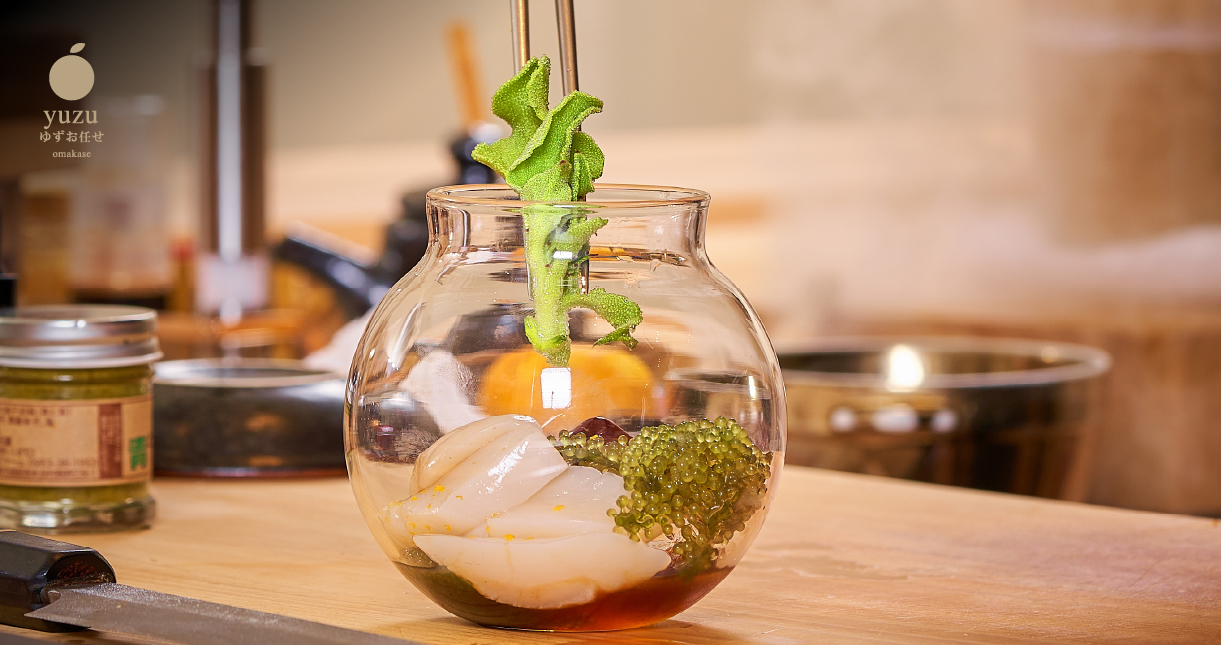
The Art of Balance: Nutritional Harmony in Omakase Cuisine
Omakase dining, derived from the Japanese phrase meaning "I'll leave it up to you," is an immersive experience where the chef selects a series of dishes for the diner. While much of the attention in omakase is focused on the artistry of flavor, texture, and presentation, an often-overlooked aspect is the nutritional balance inherent in the cuisine. The harmony of ingredients, portion sizes, and seasonal selections contributes not only to an extraordinary culinary experience but also to a healthful and nutritionally balanced meal.
Well-Being ● 2024 Sep 20
The Art of Balance: Nutritional Harmony in Omakase Cuisine
At Yuzu Omakase, the art of balance goes beyond flavors—it extends to crafting a well-rounded and nourishing dining experience. In this article, we will explore how omakase cuisine achieves a delicate balance in nutritional content, reflecting the principles of moderation, variety, and seasonal freshness that lie at the heart of Japanese culinary philosophy.
The Foundation of Omakase: Balance in Flavor and Nutrition

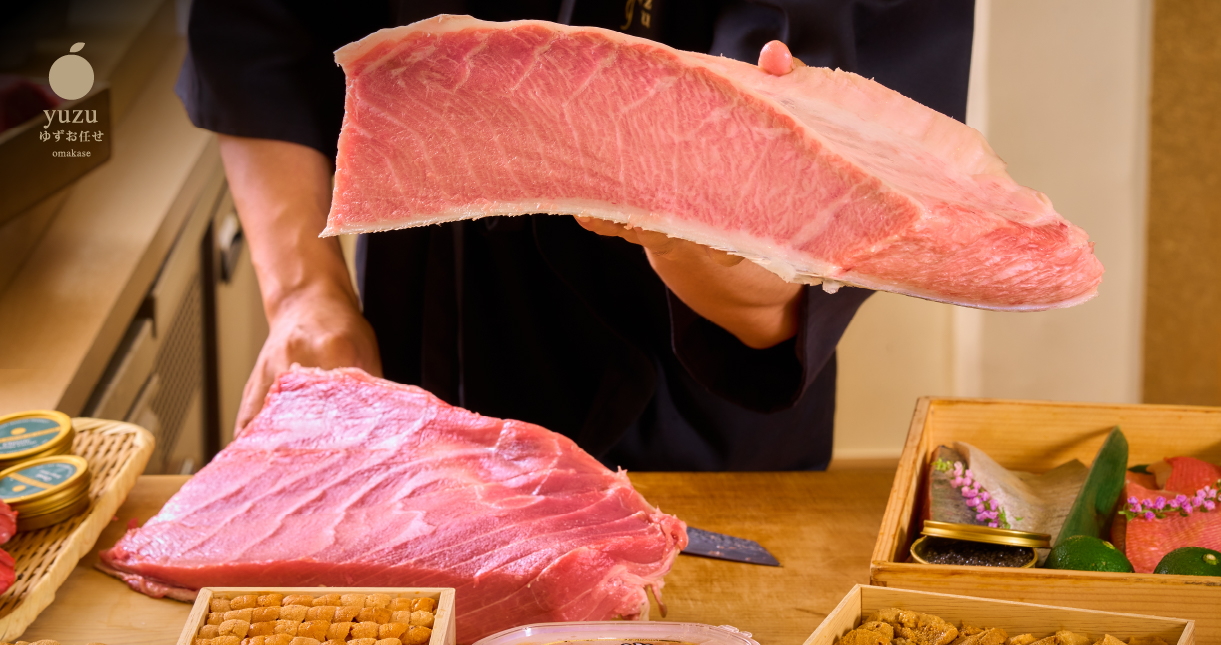
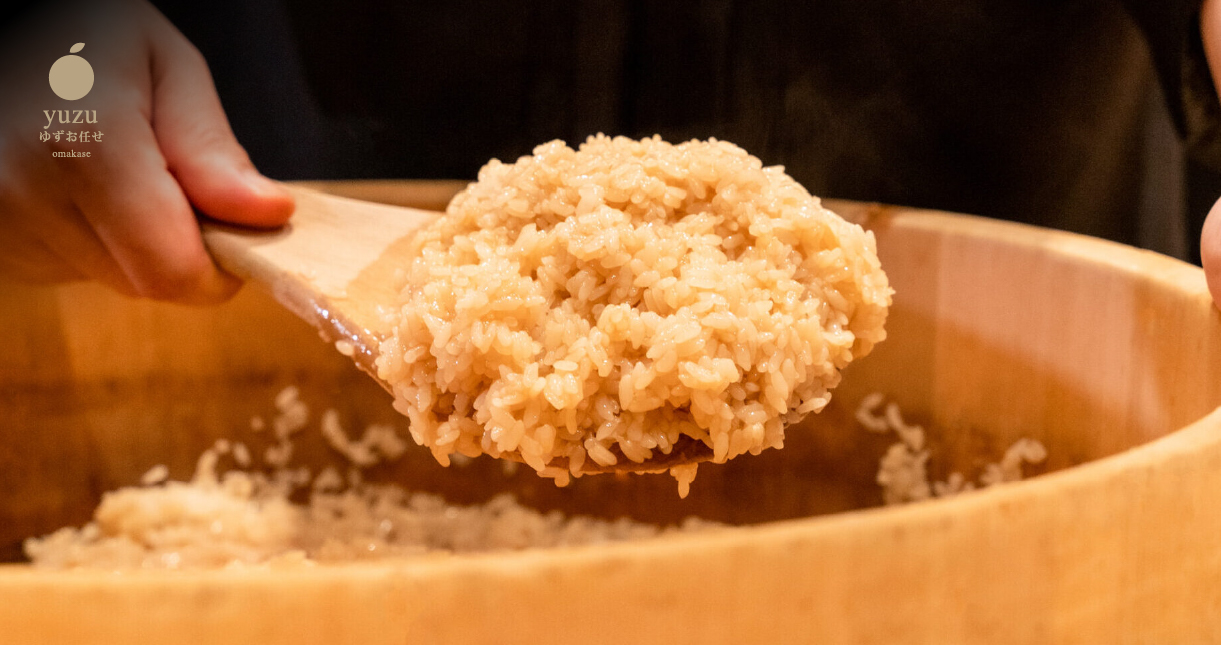
1. The Balance of Taste and Texture
Japanese cuisine is built on the concept of umami, or savoriness, which is considered the "fifth taste" alongside sweetness, sourness, bitterness, and saltiness. In omakase, achieving a balance of these flavors is key to creating dishes that are harmonious and satisfying. Each course is thoughtfully composed to balance richness with freshness, acidity with sweetness, and textures ranging from tender to crispy.
Umami-Rich Ingredients
Sushi and sashimi often feature fish like Akami (Lean Tuna), Madai (Sea Bream), and Uni (Sea Urchin), all of which are naturally high in umami. This savory depth satisfies the palate without the need for excessive fats or sugars, promoting a meal that is rich in flavor but balanced in terms of nutritional content.
Complementary Textures
The soft, buttery texture of Otoro (Fatty Tuna) is often paired with the refreshing crunch of vegetables or a crisp nori sheet, providing a balance between indulgence and lightness. The combination of textures encourages mindful eating and a more satisfying meal.
2. Portion Control and Mindful Eating
In omakase, portion sizes are small but meticulously crafted, allowing diners to savor each bite without overindulging. This approach encourages mindful eating, where the focus is on quality rather than quantity. Each dish is designed to offer a complete sensory experience in just a few bites, promoting balance and moderation.
Smaller Portions, Greater Variety
Instead of large portions of a single dish, omakase offers a variety of small courses that together form a nutritionally complete meal. This approach ensures that diners enjoy a wide range of flavors and nutrients without overeating.
Mindful Eating Practices
The deliberate pace of omakase dining encourages guests to slow down and appreciate each bite, fostering a deeper connection with the food and its ingredients. This not only enhances the dining experience but also supports better digestion and portion control.
Nutritional Balance in Omakase Ingredients
1. Fresh Seafood: A Lean Source of Protein and Omega-3s
Seafood is the cornerstone of omakase cuisine, providing a lean, high-quality source of protein that is essential for maintaining muscle mass, supporting metabolic functions, and promoting overall health. The fish used in omakase is typically raw or lightly cooked, preserving its nutritional integrity.
Rich in Omega-3 Fatty Acids
Fatty fish like Otoro (Fatty Tuna), Salmon, and Nodoguro (Blackthroat Seaperch) are rich in omega-3 fatty acids, which are known for their heart-healthy benefits. Omega-3s help reduce inflammation, support brain function, and lower the risk of heart disease.
Low in Saturated Fat
Unlike red meat or processed foods, the seafood in omakase is naturally low in saturated fats, making it a heart-healthy option that provides essential nutrients without the negative health impacts of high-fat meals.
2. Rice: A Source of Energy and Fiber
Sushi rice, known as shari, is lightly seasoned with rice vinegar, salt, and sugar. While rice provides a source of carbohydrates for energy, the small portion sizes ensure that the carbohydrate content remains balanced within the context of the entire meal.
Moderate Carbohydrates
In omakase, rice is typically served in small portions, providing just the right amount of energy without spiking blood sugar levels. The combination of rice with protein-rich fish slows down digestion, helping to maintain steady energy levels throughout the meal.
Digestive Benefits
Sushi rice also contains a small amount of fiber, particularly when combined with seaweed (nori), which aids in digestion and supports gut health.
3. Vegetables: Nutrient-Dense and Low in Calories
While seafood takes center stage, vegetables play a crucial role in providing nutritional balance. At Yuzu Omakase, seasonal vegetables are carefully chosen to complement the seafood dishes, adding both visual appeal and essential vitamins and minerals to the meal.
Seasonal Vegetables
Depending on the time of year, you might find dishes featuring Junsai (Water Shield), Edible Canvas (Leafy Greens), or crisp vegetables served with liquid nitrogen. These vegetables are rich in vitamins like A and C, as well as antioxidants that support immune function and overall well-being.
Low in Calories, High in Nutrients
Vegetables are naturally low in calories, yet they are packed with essential nutrients. Including a variety of vegetables in the omakase menu ensures that diners receive the necessary vitamins and minerals to support a balanced diet.
4. Healthy Fats: A Delicate Balance
While omakase dishes may include rich ingredients like Otoro or Iberico Pork, these are balanced with lighter fare and nutrient-dense vegetables. The healthy fats found in fatty fish, avocado, and certain garnishes provide satiety without overloading the meal with unnecessary calories.
Omega-3 Fats
As mentioned earlier, the omega-3 fatty acids found in fish like Otoro, Akami, and Hotate (Scallop) promote heart health and reduce inflammation.
Monounsaturated Fats
Ingredients like Iberico pork or avocado, when used sparingly, add flavor and richness while providing healthy fats that support good cholesterol levels and brain function.
Seasonal Balance: The Role of Freshness in Nutrition
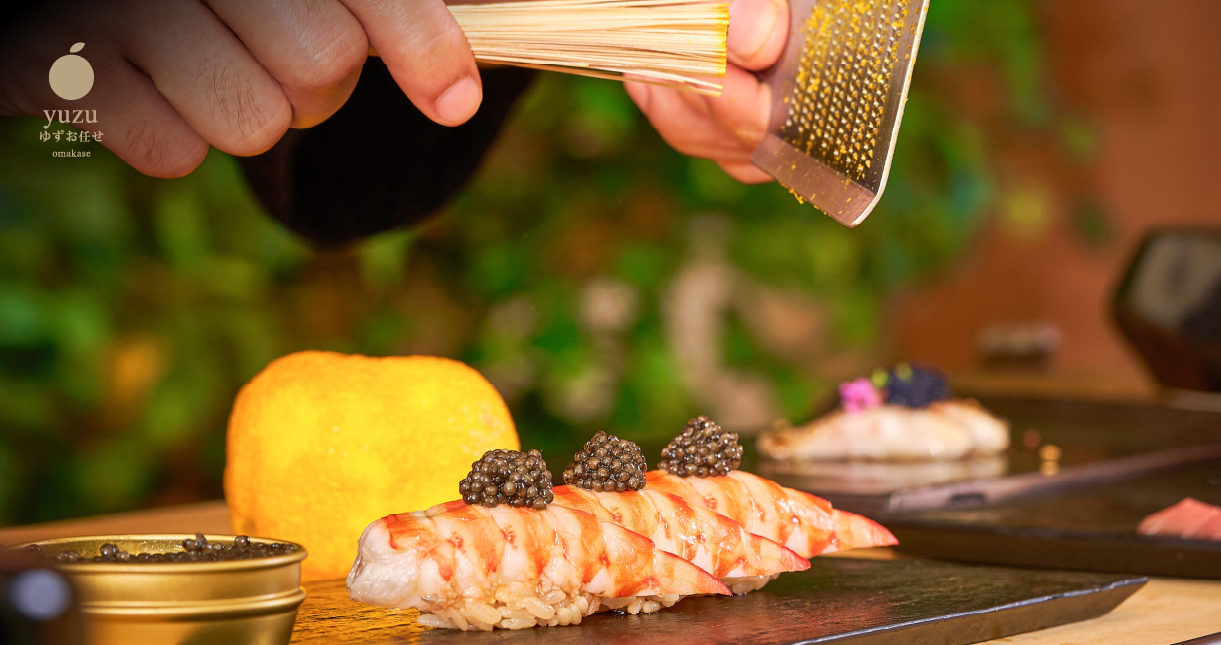
One of the defining characteristics of omakase cuisine is its commitment to seasonality. Each season brings a new array of fresh ingredients, from seafood to vegetables, ensuring that the dishes are not only flavorful but also nutritionally balanced.
1. Spring and Summer: Light and Refreshing
In spring and summer, Yuzu Omakase focuses on light, refreshing dishes that are high in water content and rich in vitamins. The menu during these warmer months often features ingredients like Sayori (Halfbeak), Ama Ebi (Sweet Shrimp), and seasonal vegetables, offering a cooling, hydrating effect while providing essential nutrients.
Hydration and Vitamin C
Ingredients like lime, yuzu, and Thai citrus fruits are often used to enhance the flavor of summer dishes, providing a boost of vitamin C and aiding in hydration.
Low-Calorie Options
The lighter fare of spring and summer omakase features more sashimi, seaweed, and seasonal vegetables, which are naturally low in calories but rich in nutrients, perfect for maintaining energy levels without feeling heavy.
2. Autumn and Winter: Rich and Nourishing
As the weather cools, Yuzu Omakase shifts to heartier ingredients that provide warmth and nourishment. Dishes featuring Kinki (Rockfish), Zuwaigani (Snow Crab), and Otoro offer a richer, more indulgent flavor profile, but are still balanced by fresh vegetables and lighter sides.
Warming Ingredients
In winter, dishes may incorporate miso broth or truffle oil, providing warmth and depth without overloading on calories or unhealthy fats. These rich flavors are balanced by fresh seafood, which keeps the meal light yet satisfying.
Energy for Colder Months
The higher fat content of winter seafood like Otoro provides sustained energy and satiety, which is essential during colder months when the body needs more calories to stay warm and active.
Balance Beyond the Plate: The Mind-Body Connection
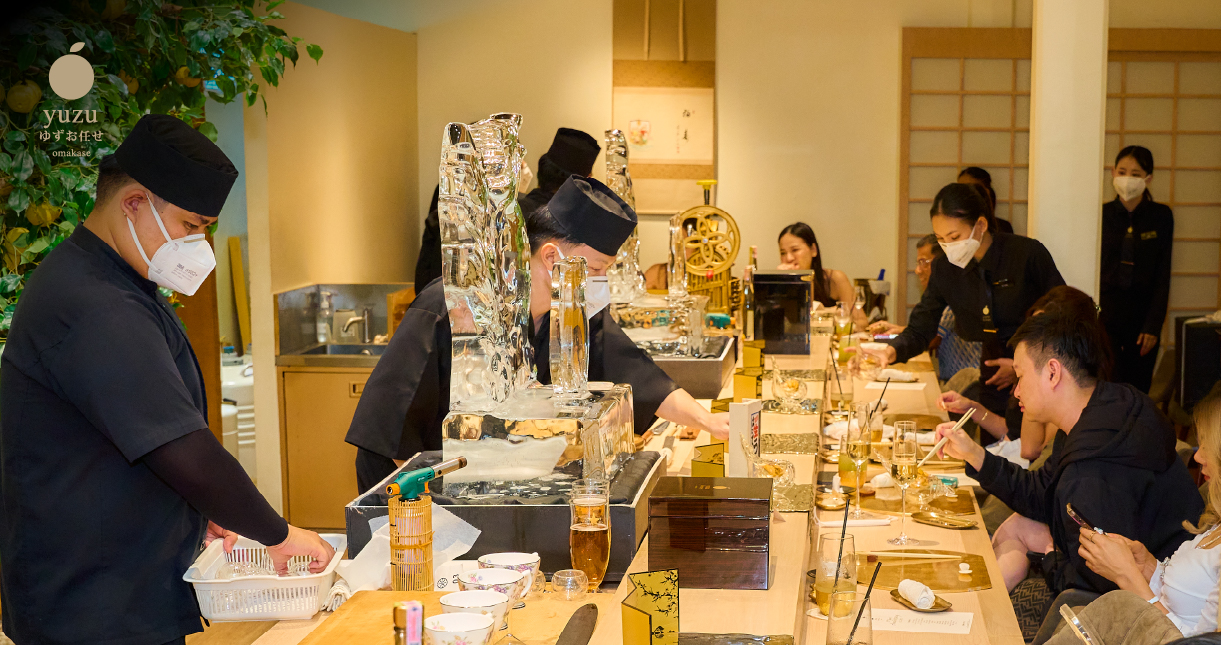
The art of omakase also extends to the experience of dining itself. By encouraging diners to focus on each dish, enjoy the progression of flavors, and engage in the moment, omakase promotes a mindful connection between the body and the food.
1. Mindful Eating for Digestion and Satisfaction
The slower pace of omakase dining naturally encourages mindful eating, which has been shown to improve digestion and increase satisfaction. Paying attention to each bite, appreciating the flavors, and taking time between courses allows the body to process food more effectively, reducing the likelihood of overeating.
2. Cultural Respect for Balance and Moderation
Japanese cuisine, and omakase in particular, reflects the broader cultural values of balance, moderation, and respect for nature. This ethos is not only about achieving a balance of flavors on the plate but also about maintaining balance in life—nourishing the body with whole, fresh foods that promote long-term health and well-being.
Conclusion
The art of balance in omakase cuisine goes beyond just creating a beautiful dish—it encompasses flavor, texture, and, importantly, nutrition. At Yuzu Omakase, each meal is designed to offer a complete sensory and nutritional experience, with an emphasis on fresh, seasonal ingredients, mindful portion control, and a harmony of healthy fats, proteins, and carbohydrates. Whether you are enjoying the light, refreshing flavors of summer or the richer, heartier dishes of winter, omakase provides a balanced, health-conscious approach to fine dining that nourishes both body and soul.

RELATE



